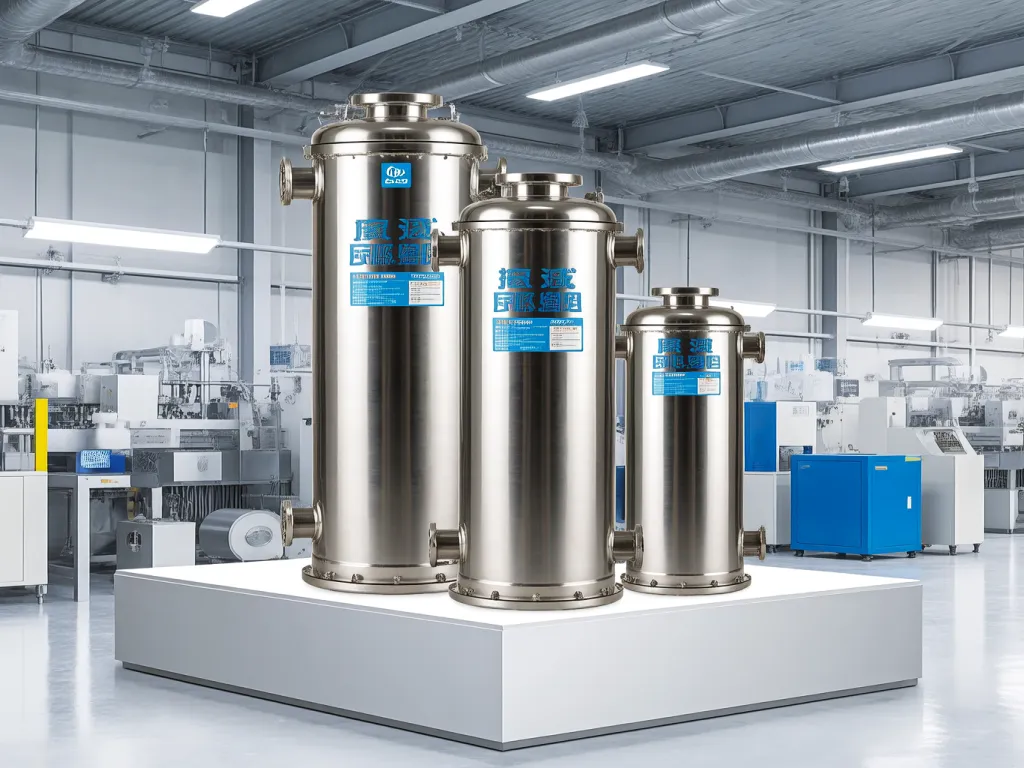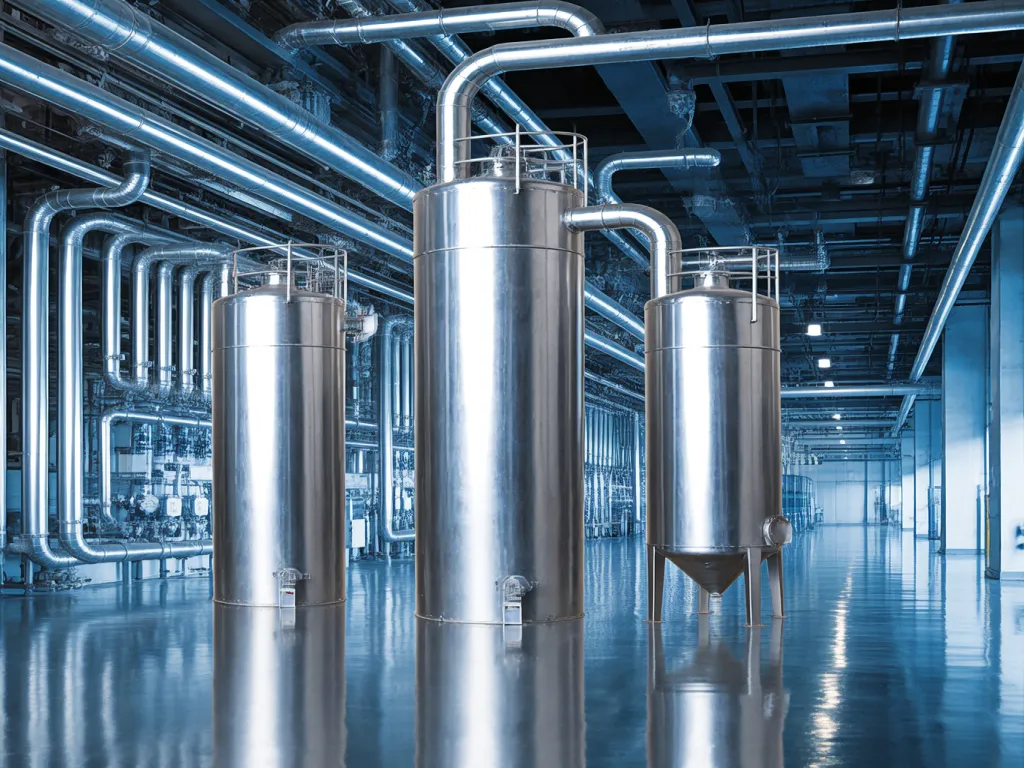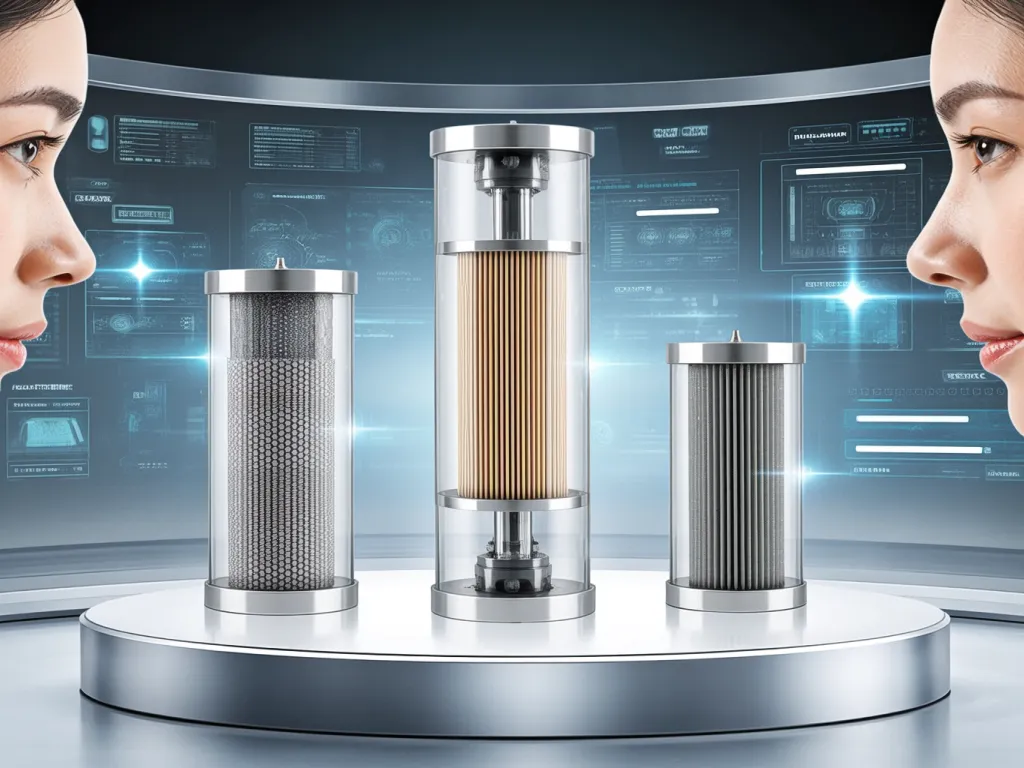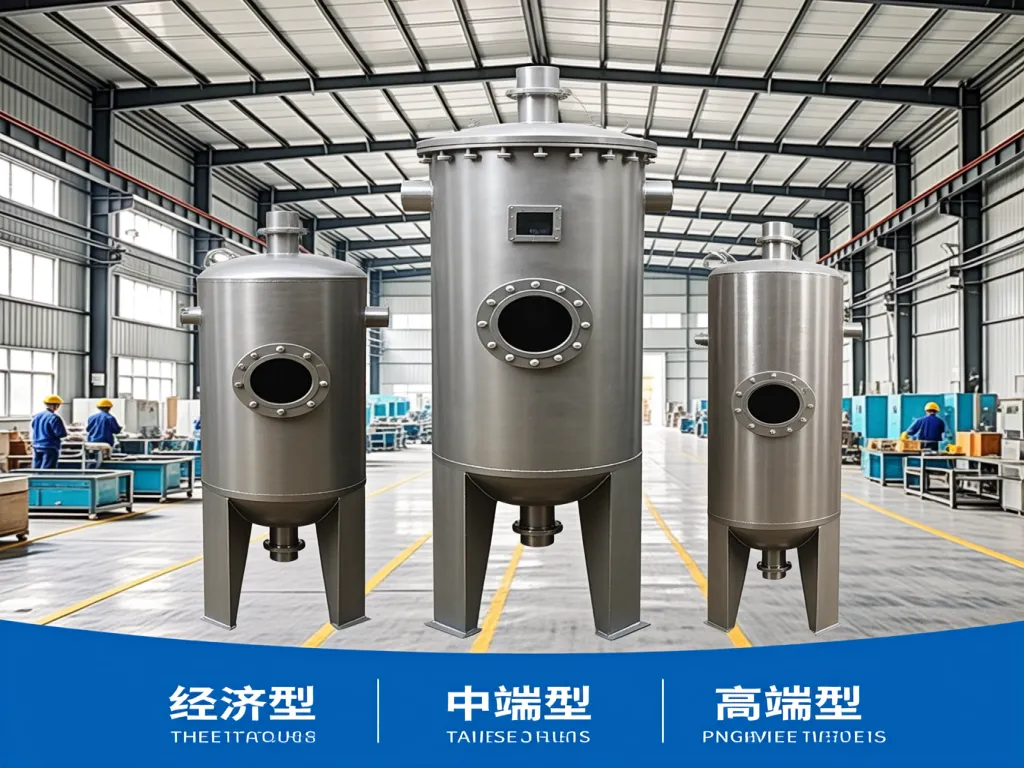Budget-Friendly Picks: Bag Filter Housing Price Guide

Navigating the world of industrial filtration? The bag filter housing price range can be as varied as the applications it serves. Whether you’re outfitting a chemical plant or upgrading a food processing line, understanding the cost spectrum is crucial. But here’s the catch: how do you balance budget constraints with performance demands? Let’s dive into the nitty-gritty of bag filter housing pricing, from budget basics to premium powerhouses, and discover how to make every dollar count in your filtration system.

Price Range Classification & Basic Performance Overview: Introducing Low, Medium, and High-End Bag Filter Housing Options
Low-End Bag Filter Housing: Affordable Yet Functional
Starting at the lower end of the price spectrum, low-cost bag filter housing units are designed for basic filtration tasks where high precision isn’t a top priority. These models typically feature a simpler design, often constructed from less expensive materials like standard carbon steel or even certain plastics. The filtration accuracy in this range usually falls within the 10-50 micron range, making them suitable for coarse filtration applications such as pre-filtration or protecting downstream equipment from larger particles. In terms of processing capacity, low-end bag filter housing units are generally smaller and handle lower flow rates, often up to 100 gallons per minute (GPM) or less. They are ideal for small-scale operations or applications where the volume of fluid to be filtered is relatively low. Despite their simplicity, these units offer a cost-effective solution for businesses looking to implement basic filtration without a hefty initial investment. For those seeking cost-effective filtration options, exploring wholesale multi-pocket envelope filter bags can be a great starting point to complement your system.
Medium-Range Bag Filter Housing: Balancing Cost and Performance
Moving up the price ladder, medium-range bag filter housing units strike a balance between affordability and enhanced performance. These models often incorporate better materials, such as stainless steel, which improves corrosion resistance and extends the lifespan of the unit. The filtration precision in this category can range from 1 to 10 microns, providing a significant upgrade over low-end options and making them suitable for a wider range of applications, including some chemical processing and food and beverage industries. Medium-range bag filter housing units also boast higher processing capacities, often capable of handling flow rates up to 500 GPM or more. This makes them a versatile choice for medium-sized operations that require consistent and reliable filtration. Additionally, these units may include features like quick-opening covers for easier bag replacement and inspection, enhancing operational efficiency. For enhanced filtration performance, consider durable PTFE star bottom filter bags as an integral part of your medium-range system.
High-End Bag Filter Housing: Precision and Durability at a Premium
At the top end of the price range, high-end bag filter housing units represent the pinnacle of filtration technology and durability. Constructed from premium materials like 316L stainless steel or even exotic alloys, these units are built to withstand the harshest environments and most demanding applications. The filtration precision in this category can reach sub-micron levels, making them indispensable in industries where ultra-pure filtration is essential, such as pharmaceuticals and semiconductor manufacturing. High-end bag filter housing units also excel in processing capacity, often capable of handling flow rates exceeding 1000 GPM. They incorporate advanced design features like self-cleaning mechanisms, automated control systems, and real-time monitoring capabilities, ensuring optimal performance and minimal downtime. While the initial investment may be higher, the long-term benefits in terms of reduced maintenance costs, improved product quality, and enhanced operational reliability make these units a worthwhile investment for large-scale or critical applications. To maximize the efficiency of high-end systems, PTFE dust filter bags can provide superior filtration capabilities.

Performance Differences in Depth: A Detailed Comparison of Filtration Efficiency, Durability, and Maintenance Costs Across Price Ranges
When it comes to bag filter housing, the price range can vary significantly, and so do the performance characteristics. Whether you’re on a tight budget or willing to invest more for premium features, understanding the nuances between low, mid, and high-price range products is crucial. Let’s dive into the key performance indicators—filtration efficiency, durability, and maintenance costs—across these price spectrums. First up, let’s talk materials. In the low-price range, you’ll often find bag filter housings made from basic plastics or thin metals. These materials are cost-effective but may compromise on durability and resistance to harsh chemicals. For instance, a plastic housing might not withstand high temperatures or corrosive substances as well as its metal counterparts. Moving to the mid-price range, you’ll notice a shift towards more robust materials like stainless steel or reinforced plastics. These materials offer better corrosion resistance and can handle a wider range of operating conditions. Stainless steel, in particular, is a favorite in industries where hygiene and durability are paramount, such as food processing and pharmaceuticals. At the high-end, expect to see exotic alloys or specialized composites designed for extreme environments. These materials are not only incredibly durable but also optimized for specific applications, like high-pressure filtration or handling aggressive chemicals. Now, let’s talk design. Low-price range bag filter housings often feature simple, straightforward designs. While functional, they may lack the finesse and optimization seen in higher-end models. For example, the inlet and outlet configurations might be less efficient, leading to higher pressure drops and reduced filtration efficiency. In the mid-price range, designs become more sophisticated. You’ll find housings with better flow dynamics, reducing pressure drops and improving overall filtration performance. Some models might also include features like easy-access doors for quick filter changes, saving time and maintenance costs. High-end bag filter housings are where design innovation really shines. These products often incorporate advanced aerodynamics, modular designs for easy scaling, and even smart sensors for real-time monitoring. Imagine a housing that can alert you when it’s time to change the filter or adjust its operation based on the incoming flow rate—that’s the kind of intelligence you get at the top end. Technical specifications also play a big role in performance differences. Low-price range products might have limited pressure ratings, meaning they can’t handle high-pressure applications without risking failure. Filtration area could be smaller too, requiring more frequent filter changes and increasing operational costs. Mid-range products strike a balance, offering decent pressure ratings and filtration areas suitable for a wide range of industrial applications. They might also include features like automatic drain valves or differential pressure gauges, making maintenance easier and more predictable. High-end bag filter housings are built for the toughest jobs. They boast high pressure ratings, large filtration areas, and advanced filtration media for superior particle capture. Some even come with self-cleaning mechanisms, drastically reducing maintenance needs and downtime. So, how do these differences translate into real-world performance? Well, filtration efficiency is a big one. Higher-end materials and designs mean better particle capture, leading to cleaner outputs and potentially lower downstream costs. Durability is another key factor. Investing in a more expensive housing can save you money in the long run by reducing the need for frequent replacements. And let’s not forget about maintenance costs. Smart designs and high-quality materials mean fewer breakdowns, less downtime, and lower overall maintenance expenses. In the end, choosing the right bag filter housing is about finding the sweet spot between your budget and performance needs. Are you processing corrosive chemicals? Then you might need the durability of stainless steel. Operating in a high-pressure environment? Look for a housing with a high pressure rating. Need minimal downtime? Consider a model with self-cleaning capabilities. By understanding the performance differences across price ranges, you can make an informed decision that balances cost with the specific demands of your industrial application.
Materials: The Foundation of Performance
The choice of materials in bag filter housing construction is a critical factor influencing both durability and filtration efficiency. Low-cost options often rely on basic plastics or thin metals, which, while economical, may not hold up well under harsh conditions. For instance, plastic housings can deform or crack under high temperatures, compromising the integrity of the filtration system. Thin metals, on the other hand, may corrode easily when exposed to certain chemicals, leading to leaks and reduced performance. Mid-range products typically upgrade to stainless steel or reinforced plastics. Stainless steel offers excellent corrosion resistance and can withstand a wide range of temperatures, making it ideal for industries like food processing and pharmaceuticals where hygiene is paramount. Reinforced plastics, while not as durable as stainless steel, still offer improved resistance to chemicals and physical stress compared to basic plastics. High-end bag filter housings often utilize exotic alloys or specialized composites. These materials are engineered to perform under extreme conditions, such as high pressure, high temperature, or exposure to highly corrosive substances. For example, a housing made from a nickel alloy might be used in chemical processing plants where standard stainless steel would corrode quickly. The choice of material directly impacts the housing’s ability to maintain filtration efficiency over time. Durable materials resist wear and tear, ensuring consistent performance and reducing the need for frequent replacements.
Design: Optimizing Flow and Accessibility
Design plays a pivotal role in the performance of bag filter housings, affecting everything from filtration efficiency to maintenance ease. Low-price range products often feature simple, boxy designs that, while functional, may not be optimized for fluid dynamics. This can lead to higher pressure drops across the filter, reducing overall efficiency and increasing energy consumption. In contrast, mid-range bag filter housings incorporate more sophisticated design elements. These might include tapered inlets and outlets that improve flow distribution, reducing turbulence and pressure drops. Some models also feature easy-access doors or hinged covers, allowing for quick and hassle-free filter changes. This not only saves time during maintenance but also reduces the risk of contamination or damage to the housing. High-end designs take things a step further, integrating advanced aerodynamics and modular components. For example, a housing might be designed with removable sections that allow for easy scaling or reconfiguration based on changing process requirements. Smart sensors can also be incorporated to monitor pressure differentials, flow rates, or even filter life, providing real-time data that helps optimize performance and predict maintenance needs. The design also influences the housing’s ability to handle specific process conditions. For instance, a housing designed for high-pressure applications will have reinforced walls and specialized seals to prevent leaks. Similarly, a housing intended for use in explosive environments will incorporate safety features like pressure relief valves and static dissipation systems.
Technical Specifications: Rating the Capabilities
Technical specifications are the numbers and metrics that define a bag filter housing’s capabilities. These include pressure ratings, filtration area, flow rates, and more. Understanding these specs is crucial for selecting a housing that can handle your specific process requirements. Low-price range products often have limited pressure ratings, meaning they can’t be used in high-pressure applications without risking failure. Similarly, the filtration area might be smaller, requiring more frequent filter changes and increasing operational costs. Mid-range products offer a better balance, with decent pressure ratings and filtration areas suitable for a wide range of industrial applications. They might also include features like automatic drain valves or differential pressure gauges, which simplify maintenance and improve reliability. High-end bag filter housings are designed for the most demanding applications. They boast high pressure ratings, often exceeding several hundred PSI, making them suitable for use in hydraulic systems, chemical processing, or other high-pressure environments. The filtration area is also larger, reducing the frequency of filter changes and lowering overall maintenance costs. Some high-end models even incorporate self-cleaning mechanisms, which use backflushing or other techniques to remove accumulated particles from the filter media. This not only extends the life of the filter but also reduces downtime and labor costs associated with manual cleaning. Technical specifications also influence the housing’s compatibility with different types of filter media. For instance, a housing designed for use with pleated filters might have a different inlet configuration than one intended for use with bag filters. Similarly, a housing rated for high-temperature applications will need to accommodate filter media that can withstand those temperatures without degrading.

Cost-Effectiveness Evaluation & Application Scenario Recommendations: Analyzing Cost-Performance Ratios Across Price Ranges for Bag Filter Housing
Budget-Friendly Options: Affordable Yet Functional
Starting at the lower end of the price spectrum, budget-friendly Bag Filter Housings offer a basic but reliable solution for less demanding applications. These units typically feature simpler designs, often constructed from cost-effective materials like standard carbon steel or polypropylene. While they may not boast the highest filtration efficiencies or durability, they are perfectly adequate for environments where the risk of corrosion or extreme temperatures is minimal. For instance, in a small-scale food processing plant handling dry ingredients, a budget model could provide sufficient filtration without breaking the bank. The key here is to assess your specific needs – if your operation doesn’t require top-tier performance, why pay for it?
Mid-Range Marvels: Balancing Cost & Performance
Moving up the price ladder, mid-range Bag Filter Housings strike a sweet spot between affordability and advanced features. These models often incorporate higher-grade materials such as stainless steel, which offers better resistance to corrosion and extends the lifespan of the unit. They also tend to have more sophisticated designs, including improved sealing mechanisms and easier access for maintenance. In a chemical processing plant dealing with moderately corrosive substances, a mid-range housing would offer the durability needed to withstand harsh conditions while keeping costs in check. It’s about finding that perfect balance where you get significantly more value without overspending. For more details on how stainless steel enhances performance, you can refer to industry standards on ASTM material specifications.
Premium Picks: Top-Tier Performance for Demanding Environments
At the top end, premium Bag Filter Housings are designed for the most challenging industrial settings. Constructed from premium alloys or specialized composites, these units excel in extreme temperatures, high pressures, and aggressive chemical environments. They feature cutting-edge filtration technologies, ensuring the highest levels of purity and efficiency. For a pharmaceutical manufacturer requiring sterile filtration or a petrochemical plant handling highly corrosive fluids, investing in a premium housing is not just a luxury but a necessity. Here, the higher initial cost is offset by long-term savings in maintenance, downtime, and product quality.
Tailoring Your Choice to Your Industry
Now, let’s talk about how to match these price ranges to your specific industry. In the food sector, where hygiene is paramount, a mid-range to premium housing made from food-grade stainless steel would be ideal, ensuring compliance with strict safety standards. For the chemical industry, the choice depends on the nature of the substances being filtered – a mid-range unit might suffice for less aggressive chemicals, while a premium model would be essential for highly corrosive or toxic materials. In pharmaceuticals, where even trace contaminants can be unacceptable, a premium housing with advanced filtration capabilities is non-negotiable.
So, how do you decide? Start by evaluating your operational requirements: What are the maximum temperatures and pressures your system will encounter? How critical is filtration efficiency to your product quality? And don’t forget to factor in long-term costs, including maintenance and potential downtime. By carefully considering these aspects, you can pinpoint the Bag Filter Housing that offers the best blend of performance and affordability for your unique situation.
Choosing the right bag filter housing isn’t just about finding the cheapest option or splurging on the priciest model. As we’ve explored, the bag filter housing price range opens doors to varying levels of performance, durability, and efficiency. By aligning your budget with your industrial process requirements, you unlock the potential for optimal filtration without breaking the bank. Ready to transform your filtration setup? Share this guide with your team, explore our recommended products for your sector, and take the first step toward smarter, cost-effective industrial filtration today. The perfect balance of price and performance awaits—will you seize it?

